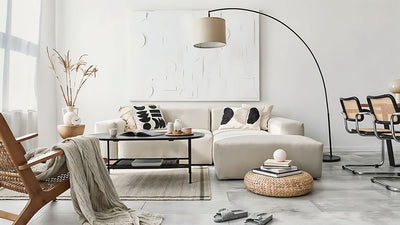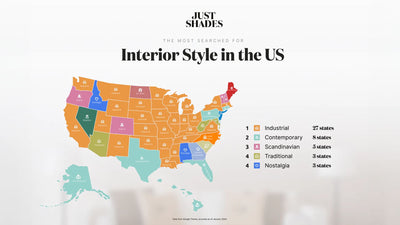
What is a Spider Fitter Lamp Shade?
One of the most common types of fitting, the spider lamp shade fitting, can be found in floor, desk, and table lamps alike. Spider fittings attach to the harp to fix a lampshade to its base, and they come in a few different forms.
In this article, we’ll explain more about lamp shades with spider fittings and how they work, before exploring some of the key differences between a spider fitting and another popular choice, the uno fitting.
Read on, and you’ll soon know all there is to know about spider fittings. And remember, if you need any further advice on lampshades and fittings, we’re here to help.
What is a Spider Fitter Lamp Shade?
A lampshade with a spider fitting refers to how the lampshade is put together - rather than how it looks.
The spider is a metal construction within the shade, located at the very top. It comes in a couple of different varieties, with either three or four metal prongs that meet in the middle. Spider fittings connect to the harp, which then connects to the base of the lamp. The two are usually joined together with a screw-on finial, which serves its functional purpose but is often also decorative.
Spider fittings are used in all kinds of lamps and work with many different shapes of shades too. We’ve seen spider fittings appear in everything from drum and cylindrical shades to less traditional shades in the bell and square shapes.
Spider Lampshade Fitting Basics
When looking at a lamp shade with a spider fitter, you’ll see three (or four) metal prongs that converge in the middle. This is the point at which you’ll be able to connect the shade to the top of the harp. The shade will rest on the harp, and the harp will surround the bulb and attach to the lamp at the base of the bulb.
Once the spider and harp are connected, you’ll be able to secure everything together with a finial. Once the finial has been screwed on, the structure of the lamp is complete.
If you find yourself struggling to connect your chosen base and bulb, you might be missing a vital part of one of these fittings.
Just give us a call to talk through the problem, and one of our team members will be able to point you in the right direction for any additional parts you might need.

Spider Vs Uno Lamp Shade: What’s the Difference?
Another popular fitting type, the uno is quite similar to the spider. However, in the case of the uno the fitting attaches to the base a little differently.
Uno fittings fit directly to the light socket, just below the bulb. That’s why the hole of an uno fittings tends to be much bigger than that of a spider, which sits at the top of the harp. Uno fittings need to be big enough to go over the entire bulb, whereas spiders can be much smaller.
If you’re not sure whether your fitting is a spider or an uno, just bear this advice in mind. As a general rule of thumb, if the fitting fits over a bulb, it’s an uno.
Get Advice on Lampshades With Spider Fittings
If you’d like to find out more about spider lamp shades, or you need any advice on how to find the best shade for your base, don’t hesitate to contact us.
Get in touch with a member of our team for any lamp shade related queries you may have, and we’ll share our decades of experience with you.
If you need any inspiration, why not check out our new arrivals and best sellers? With so many options to choose from, you’ll soon find something that works perfectly in your space.



